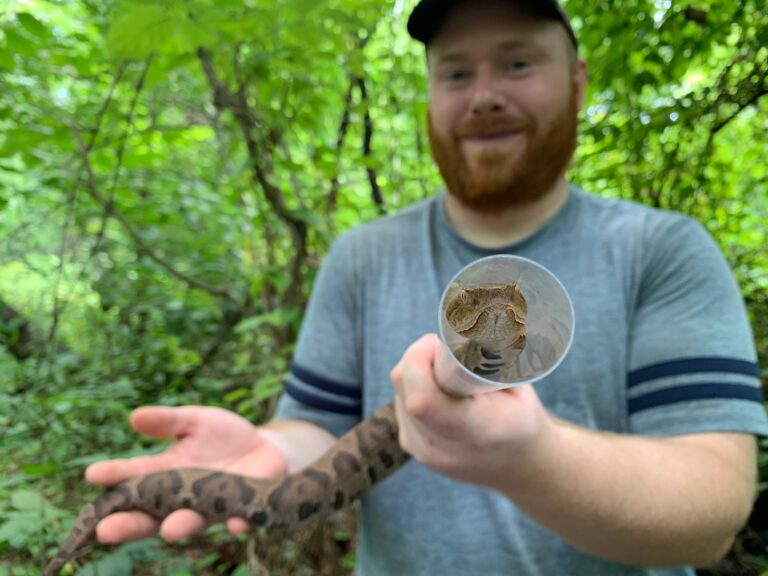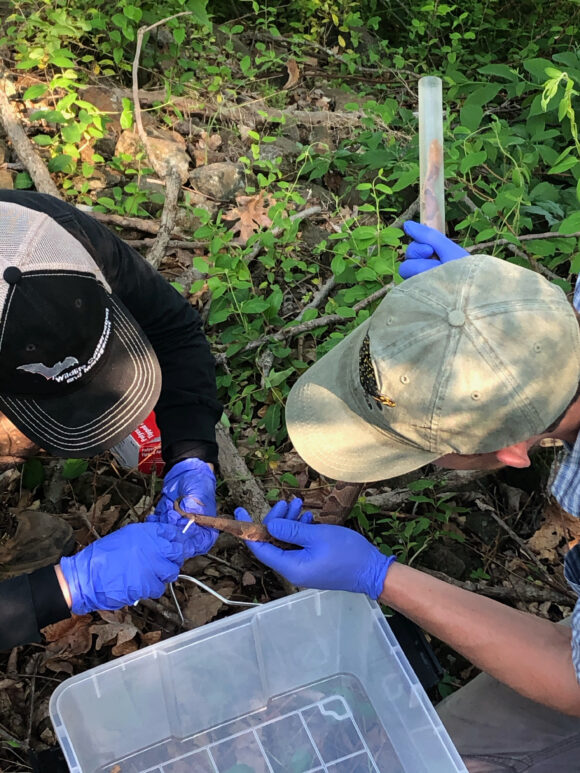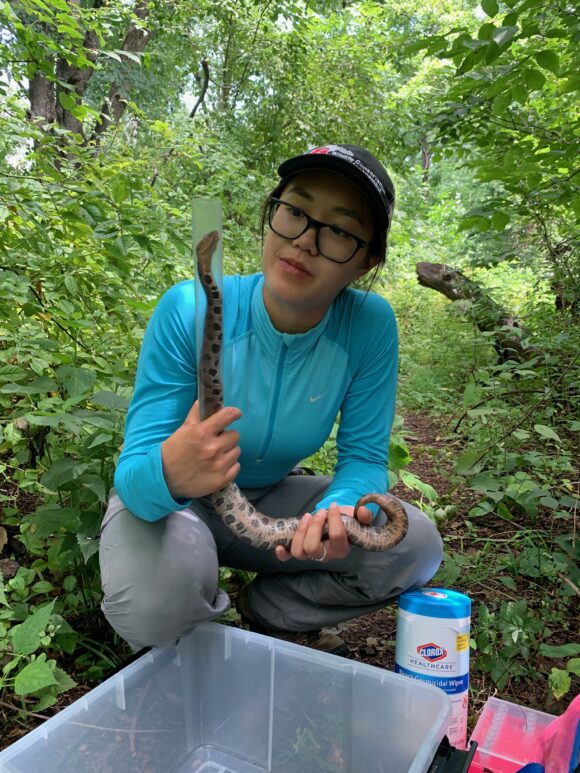

Morgan Mark (SEBS’22), Tyler Christensen (Ph.D. Candidate), and Bobby Kwait (Ph.D. Candidate)—all members of assistant professor Brooke Maslo’s lab—were recently awarded funding from the Association of Reptile and Amphibian Veterinarians (ARAV) for their project examining the seasonal dynamics of snake fungal disease in free-ranging eastern copperheads.

Snake fungal disease (SFD) is a recently discovered fungal pathogen, Ophidiomyces ophiodiicola, that is impacting snake populations in eastern North America. Little is known about SFD pathology or ecology, primarily because repeated captures of wild snakes is difficult and SFD infection doesn’t always exhibit visible clinical signs.
Mark, Christensen and Kwait leveraged their collective expertise in wildlife disease, snake biology and molecular ecology to radio-track eastern copperheads (a species of special concern in New Jersey) and repeatedly sample the same individuals throughout the active season for SFD. They are quantifying pathogen prevalence and loads using quantitative PCR methods to document seasonal patterns in SFD ecology to inform management efforts intended to mitigate population-level impacts. The work represents Mark’s George H. Cook Scholars thesis.
This article was originally published by the NJAES/SEBS Newsroom on March 7, 2022.


